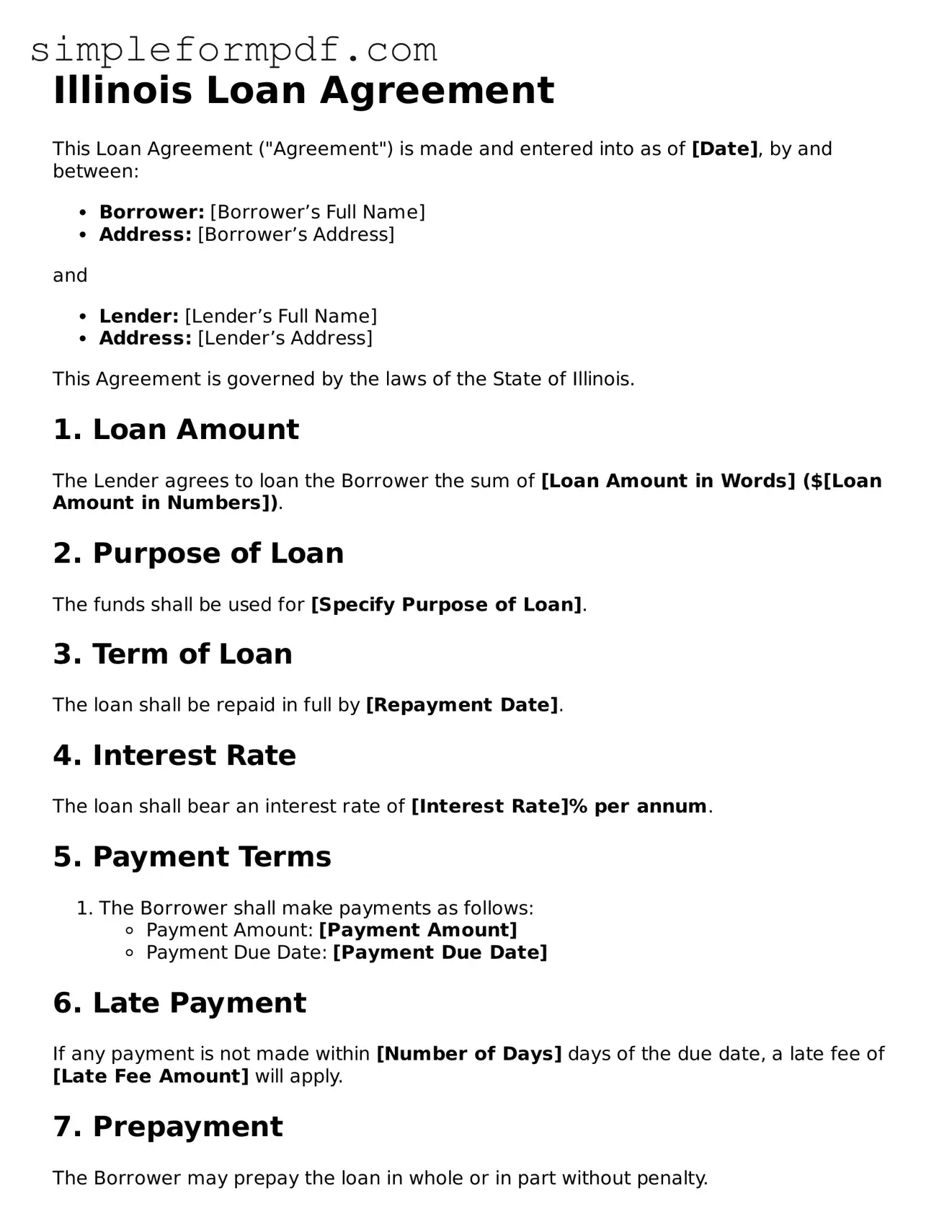Illinois Loan Agreement
This Loan Agreement ("Agreement") is made and entered into as of [Date], by and between:
- Borrower: [Borrower’s Full Name]
- Address: [Borrower’s Address]
and
- Lender: [Lender’s Full Name]
- Address: [Lender’s Address]
This Agreement is governed by the laws of the State of Illinois.
1. Loan Amount
The Lender agrees to loan the Borrower the sum of [Loan Amount in Words] ($[Loan Amount in Numbers]).
2. Purpose of Loan
The funds shall be used for [Specify Purpose of Loan].
3. Term of Loan
The loan shall be repaid in full by [Repayment Date].
4. Interest Rate
The loan shall bear an interest rate of [Interest Rate]% per annum.
5. Payment Terms
- The Borrower shall make payments as follows:
- Payment Amount: [Payment Amount]
- Payment Due Date: [Payment Due Date]
6. Late Payment
If any payment is not made within [Number of Days] days of the due date, a late fee of [Late Fee Amount] will apply.
7. Prepayment
The Borrower may prepay the loan in whole or in part without penalty.
8. Default
If the Borrower fails to make a payment or violates any terms of this Agreement, the Lender has the right to demand full repayment of the outstanding balance.
9. Governing Law
This Agreement shall be governed by and construed in accordance with the laws of the state of Illinois.
10. Signatures
By signing below, both parties agree to the terms of this Loan Agreement.
- _________________________
- Borrower’s Signature
- Date: [Date]
- _________________________
- Lender’s Signature
- Date: [Date]
